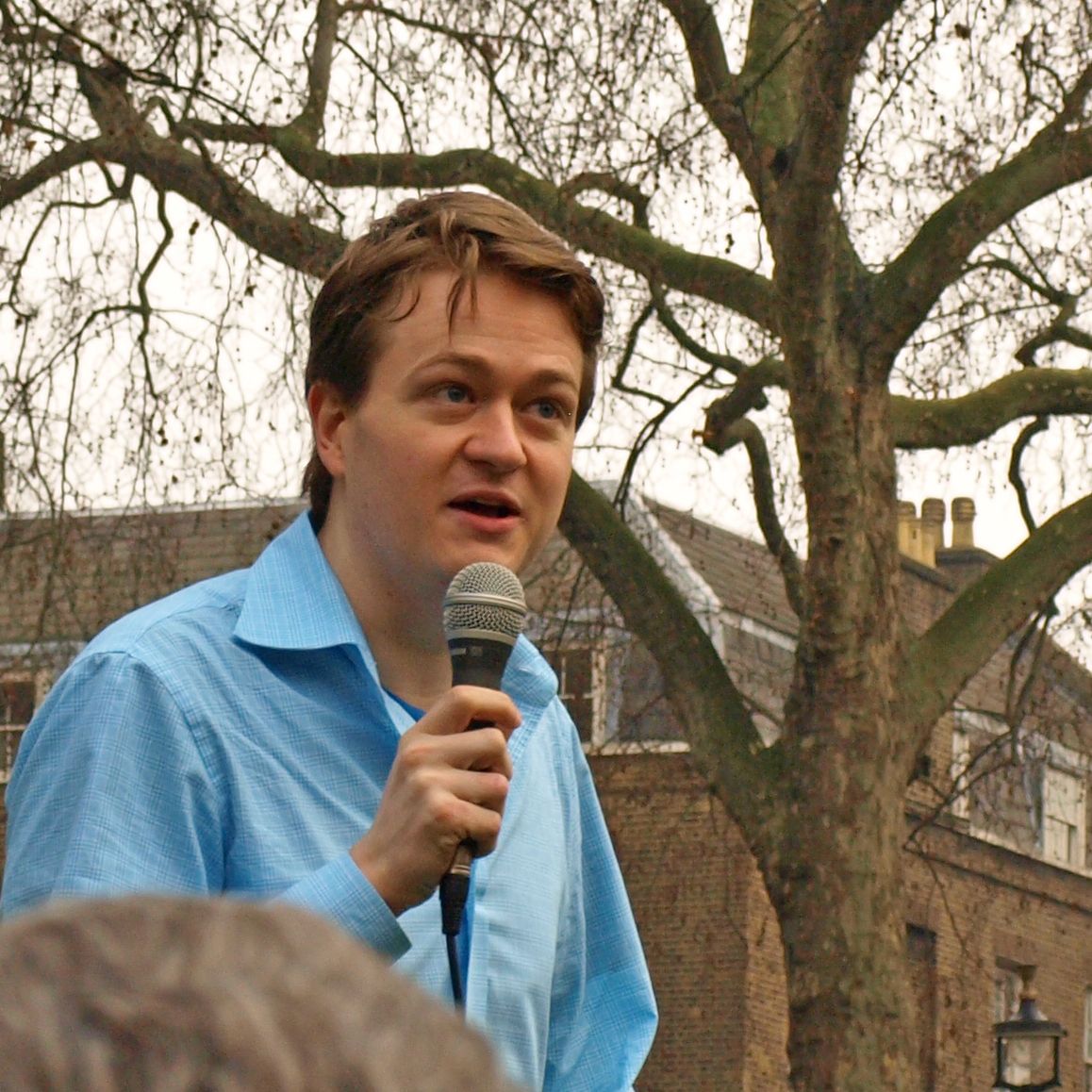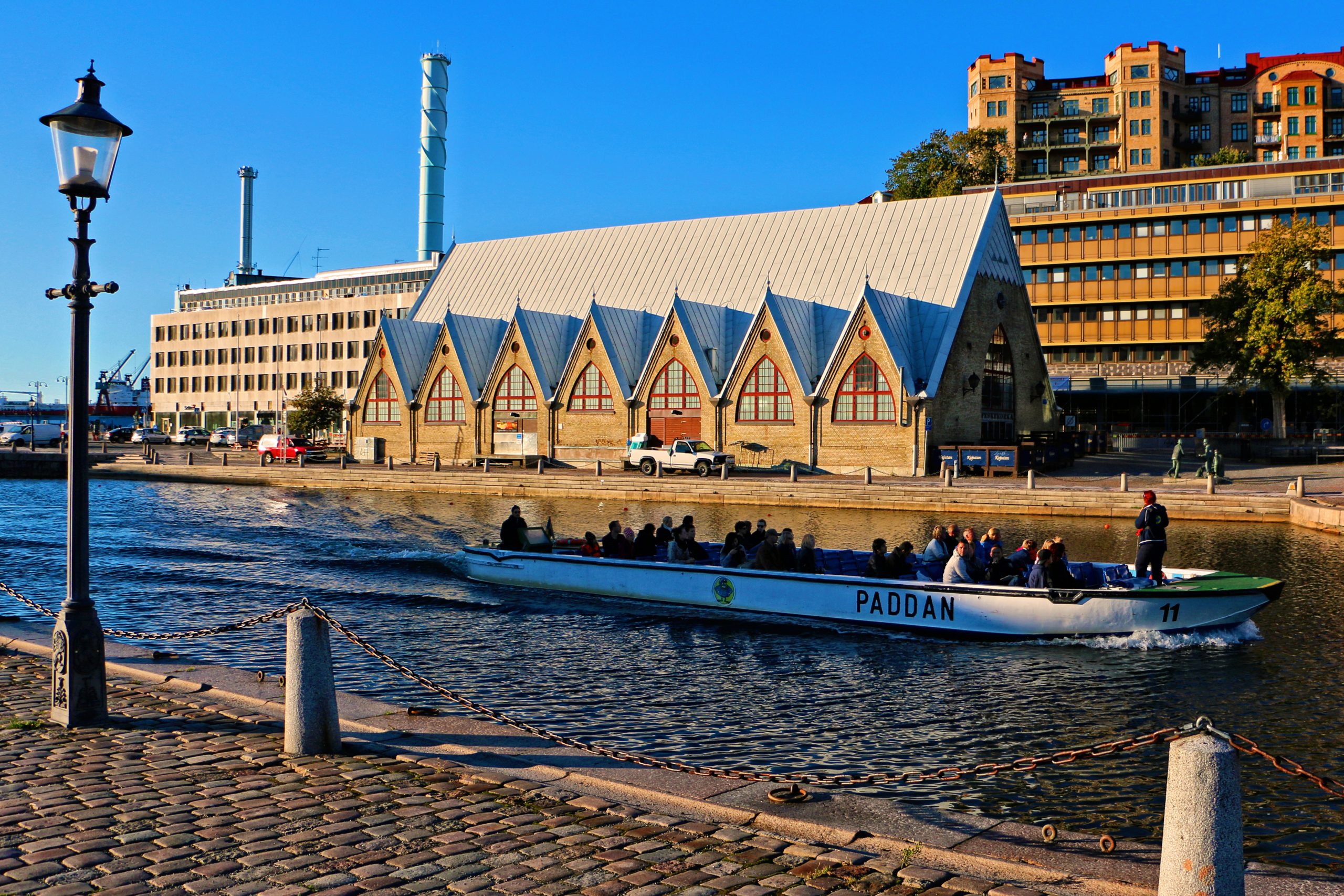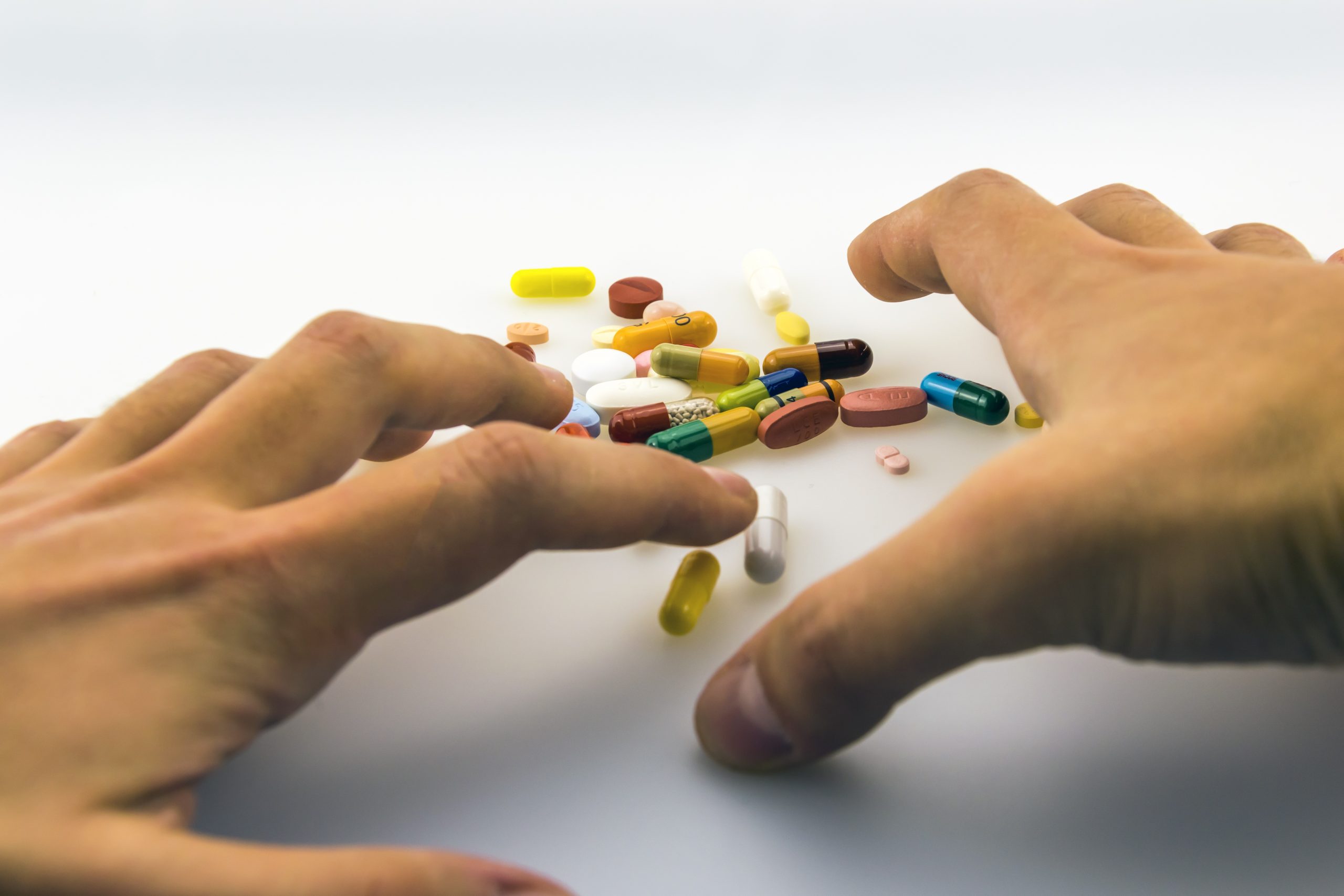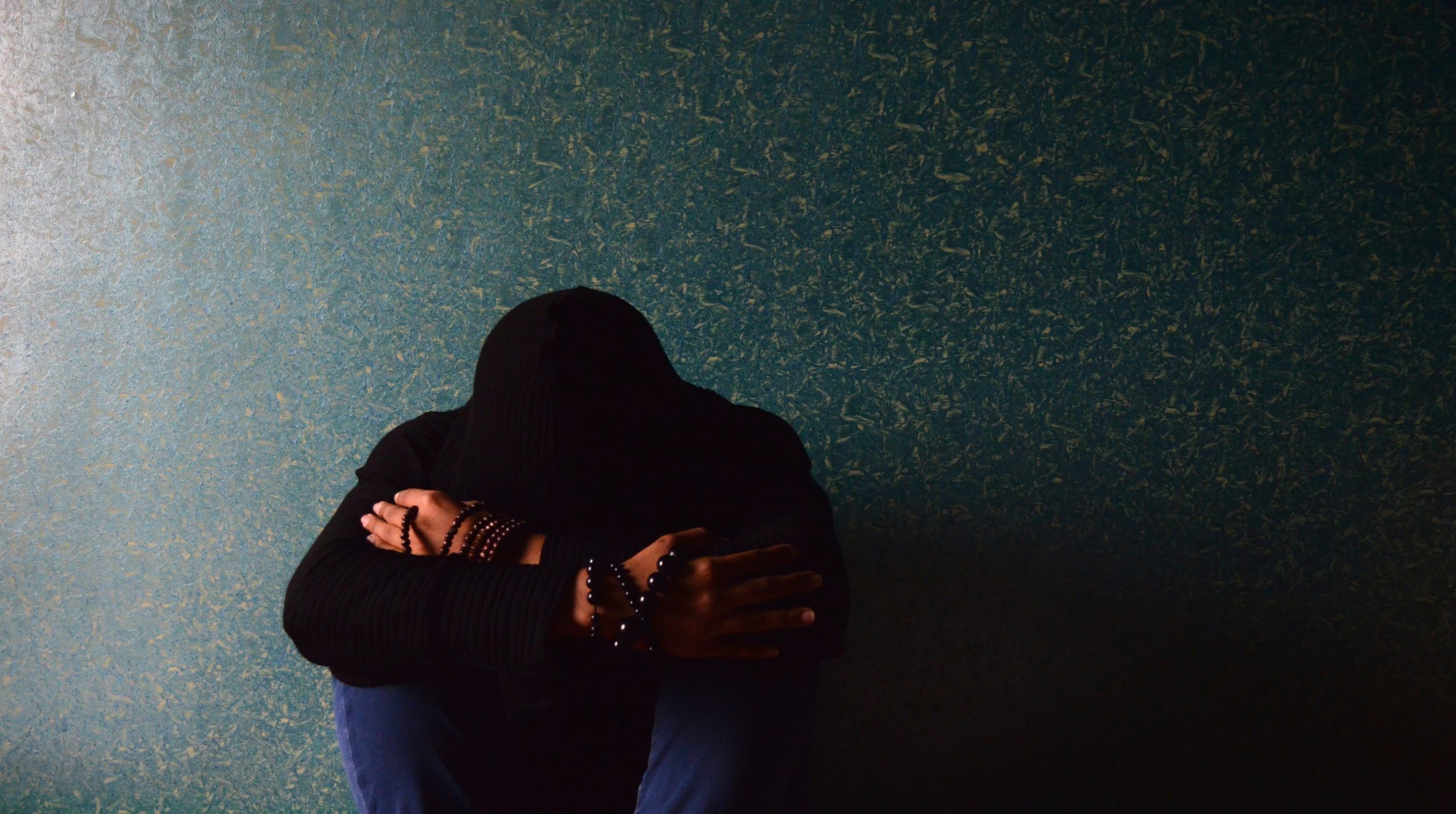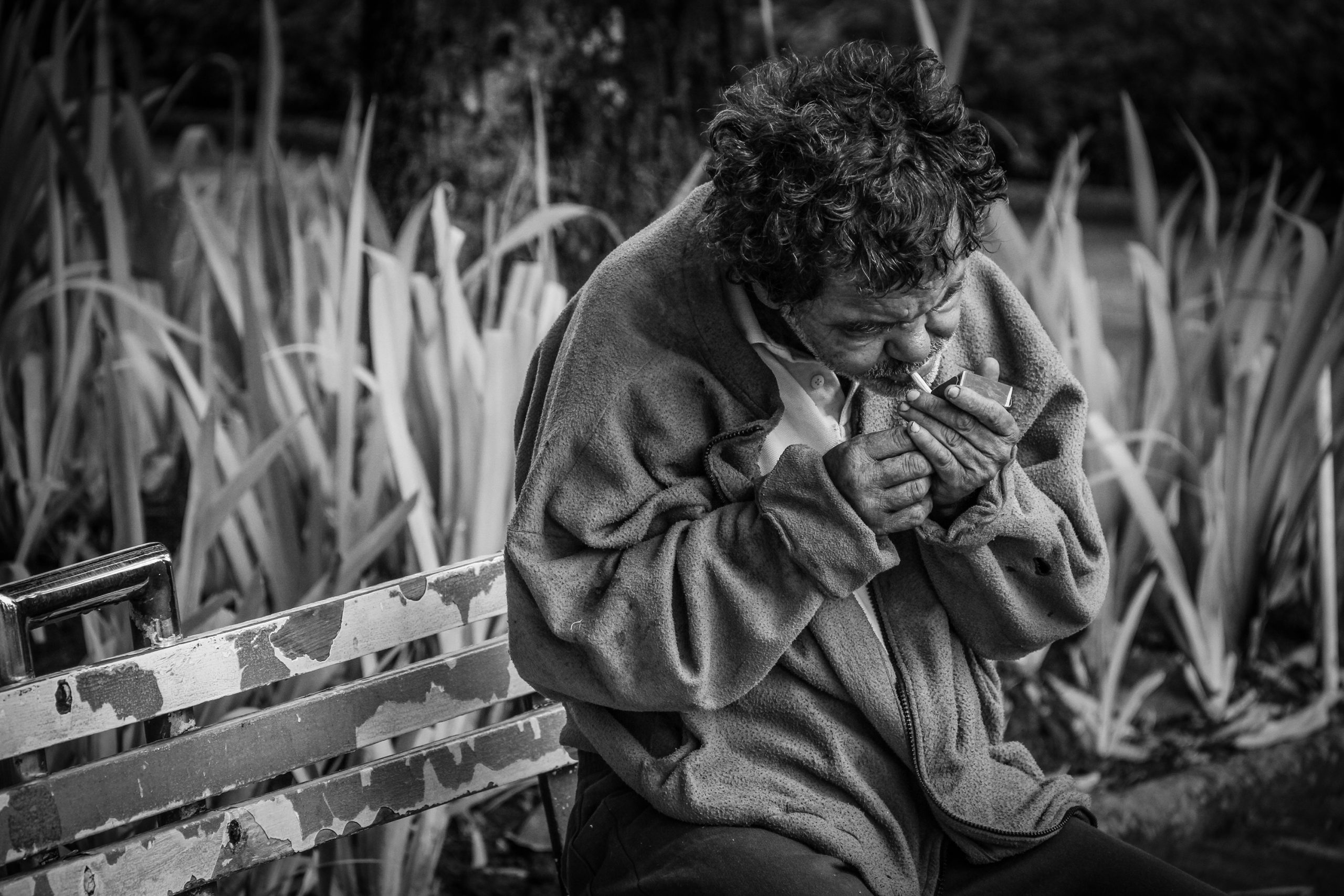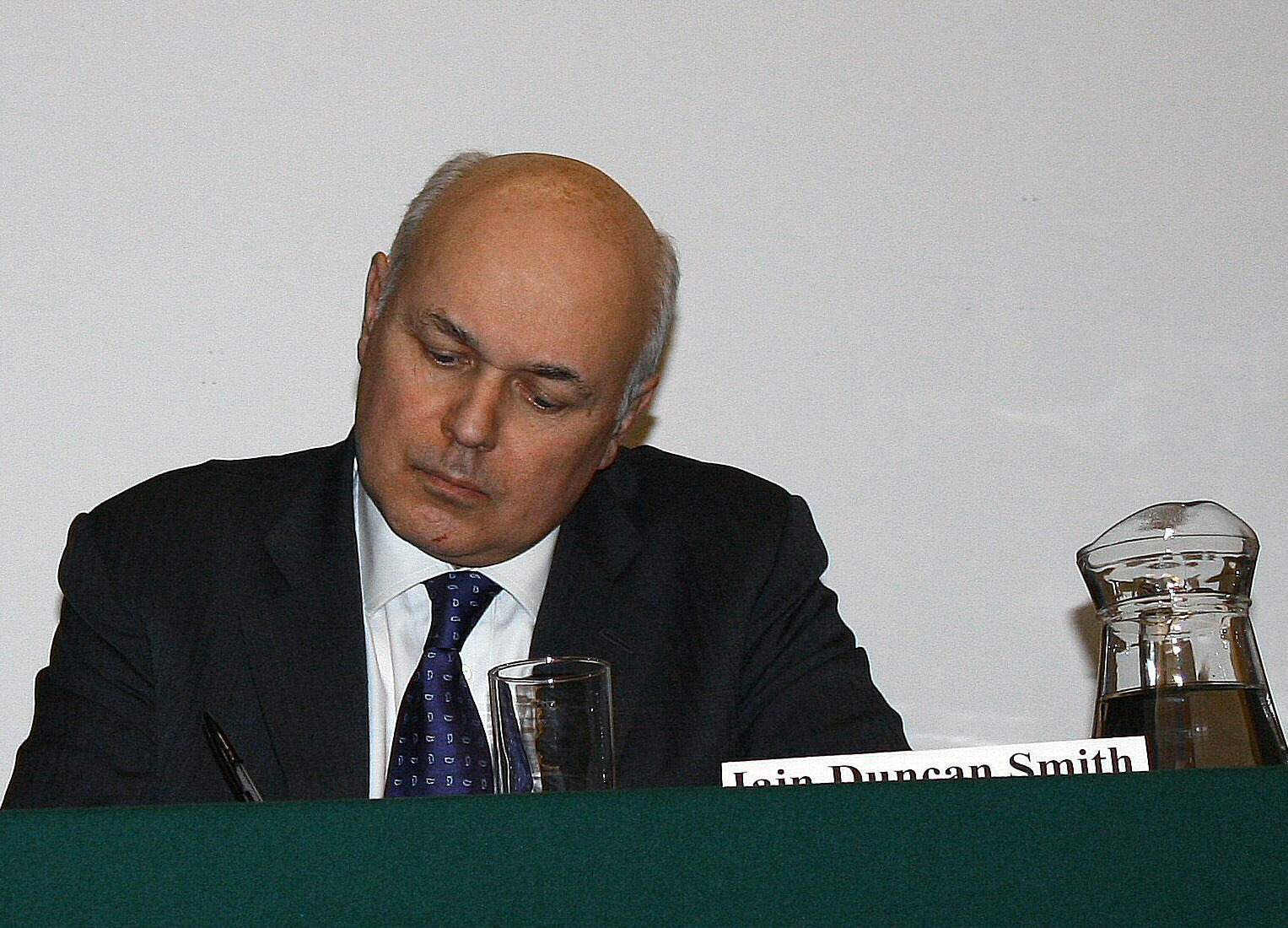Over the past three years, I have been publicly making the case for moving beyond the war on drugs in places as disparate as Baltimore, Medillin, Sydney, Paris and Buenos Aires – and everywhere, I ask the defenders of continuing the drug war one question. Can you name one place, anywhere in the world, where the drug war has succeeded?
I explain that I have been to plenty of places where drug policy reform has been remarkably successful. In Portugal, they decriminalized all drugs and transferred all the money they used to spend on ruining people’s lives to turning their lives around. The result? Injecting drug use is down by 50 percent, overdose is massively down, and virtually nobody wants to go back. In Switzerland, they legalized heroin for addicts – and since then, not one person has been killed by legal heroin, and even the conservative Swiss voted in a landslide referendum result to keep the policy in place. What real places can they point to as successes?
There are, I have found, three kinds of response to this question. The first – and by far the most common – is a blank face. Most defenders of the drug war can name nowhere were it has succeeded, yet they insist it must be intensified nonetheless. This isn’t a rarified response: the new US Attorney General, Jeff Sessions, is ramping up the drug war, yet never refers to anywhere where it has worked. The second is to name a regime so repellent we couldn’t possibly want to imitate it: a few people offer Maoist China, or Taliban Afghanistan, or Saudi Arabia. It is true that if you construct a totalitarian police state, you can briefly reduce drug use – although the moment you relax the totalitarian control, you will find the drug problems return with even greater force because you have an even more traumatized and broken population, as the current addiction crises in Afghanistan and China show.
I am most interested here in the third kind of response. Last year, I was on a panel with the former British government minister Iain Duncan Smith, and he named as his success story in the war on drugs Sweden. Many of Britain’s remaining defenders of prohibition – Melanie Phillips is another good example – look to Scandinavia. The Swedes and Norwegians, they say, have aggressive drug laws, cracking down on even minor use – and they have, as a result, low levels of addiction, and low levels of problems associated with drugs.
As it happens, I reported in depth on Swedish drug policies when I was researching my book ‘Chasing The Scream – The First and Last Days of the War on Drugs.’ The story of what really happened in Sweden is fascinating in itself – but it also contains deep lessons for Britain, the US, and every other country continuing with prohibition. They are, however, not at all the answers that the defenders of the drug war believe they are.
As a British boy growing up under Thatcherism, I always revered Sweden as the social democratic oasis across the water. I watched throughout my childhood as my country dismantled its public sector brick by brick: at one point, I studied at a state school where there was a hole in the roof in the science block, and if it rained, students had to take out umbrellas. Not in Sweden. In a country not far away, I explained, they do things very differently. And later, as a newspaper columnist for nearly ten years, I repeatedly wrote articles about how Britain should be more like Sweden. Look, I explained. There is a country where they tax more and spend more on a proper welfare state for their people. What’s the result? Far less crime. Far less poverty. Much greater social mobility. Much better success in education. And a happier society. (And that’s before I even start urging people to watch ‘Summer With Monika.’) I wrote about this so much that one reader snapped at me: “If you like Sweden so much, why don’t you go live there, and leave us alone?”
Whenever I came to Scandinavia, everything I believed was confirmed. I saw a connected, healthy society – everything I thought my country could be, if only we made different choices.
In 2012 – about a year after I started work on ‘Chasing The Scream’ – I came to Stockholm, to attend the World Federation Against Drugs (WFAD) conference. This is an annual prohibitionist jamboree – the moment when people all over the world who support intensifying the drug war gather to plot how to achieve it. It was held in a beautiful glass building looking out over the river. Inside, there were stalls run by companies who make their living by selling drug testing – to governments, companies, and prisons – alongside campaigners dedicated to, as they put it, wiping drugs from the face of the earth.
I was there because I wanted to understand what drives the drug warriors. The conference was opened by Queen Silvia of Sweden, who I immediately noticed smiles a lot more than my own Queen, and lightly touches people when she speaks. They often touch back – an act that would be considered tantamount to treason in Britain. When Michelle Obama placed her hand gently on the Queen’s back during a state visit a few years ago, it caused a minor scandal: one of our conservative newspapers, the Daily Mail, called it “absolutely extraordinary.”[1] So I was confirmed even more in my convictions about Sweden: even the country’s hereditary monarch seems an awful lot like a social democrat. Until I heard what Queen Silvia had to say. She stood alongside the US Drugs Tsar, the Russian Drugs Tsar, and the man Richard Nixon appointed to prove the drug war was a just cause. She pledged that Sweden would stand side-by-side with them.
And then, the next day, the conference paused, so that the Swedish official in charge of drug policy could issue a joint statement with the Russians and the Americans, committing to intensifying the drug war.
I was puzzled, because I knew who these people were. Russia’s drug policy is was represented by a former KGB agent called Victor Ivanov, who has a sagging white moustache, and a blank stare. In Russia, if you are found with a single empty syrige, you will be arrested and charged with drug offences. This virtually guarantees that addicts will share needles – obviously nobody wants to risk being arrested, so in a group, one addict will bring a needle, and everyone passes it round. If you wanted to create a policy to maximally spread HIV, you’d pursue this policy, championed by Ivanov. This is why Russia has one of the fastest growing HIV crises in the world.[2] If you wanted to cause maximum death among people with addiction problems, this is the policy you would choose – which is why it is condemned by virtually every relevant human rights group in the world.
And yet there was Maria Larsson, Sweden’s Minister of Health, standing alongside him, demanding a global crackdown. She complained that there is a “co-ordinated campaign to liberalize drug laws” across the world, and it must be resisted.[3] Ivanov then gave a speech in which he declared that “the objective of drug legalization supporters is to legalize transnational organized crime, a global criminal international, to make drug trafficking smooth and comfortable.”[4] He concluded by assuring the audience: “We should pass to victories over drugs, to resolutely reject decadent moods and conciliation with the drug mafia’s initiatives. We shall win.”
I was baffled. Why is Sweden – probably the most admirable country in the world politically, from my point of view – forming such a peculiar alliance, with a man who is causing the deaths of huge numbers of his own citizens? (And that’s without looking at the US drug war, which – as I had witnessed – has destroyed whole countries, like Mexico and Colombia and El Salvador).
This experience prompted me to dig into the story of Sweden’s approach towards drug laws – and found that it is more complex than this conference, or Sweden’s behaviour on the international stage, can make it seem.
To understand Sweden’s policies towards drugs, you have to start with two striking facts. Sweden has very low drug use, by any standard – and yet Sweden has an exceptionally high death rate among its citizens who do use drugs. To give just one example: a statistical analysis by the Transform Drugs Policy Institute shows that a person with an addiction problem in Sweden is thirty times more likely to die of an overdose than a person with an addiction problem in Portugal, where all drugs have been decriminalized.[5] The country Iain Duncan Smith was holding up as the place where the drug war works is in fact one of the deadliest places in the developed world to be a drug user.
The defenders of drug prohibition say that Sweden has low drug use because it has strict prohibitionist policies. It is one of the very few countries in Europe where drug use – not just drug possession – is a crime; and where addicts can be forced against their will to go into prison-like ‘treatment’. This aggressive treatment of drug users is the reason why overall use remains low: you have to be tough, even brutal, to prevent the problem from spreading.
There are, I learned, essentially two stories about Sweden’s drug policies. They are wholly contradictory – and I wanted to discover which is true.
The early stages of the story, however, are agreed to by both sides. The great jazz singer Billie Holiday came to Sweden in 1954, at a time when she was being prevented from performing in the US by the narcotics police because she had an addiction problem. (She had been serially raped as a child for money, and she was trying to stun her pain into submission with alcohol and heroin.) In the recording of an interview that survives, the Swedish interviewer – Olle Helander – tells her she is great, and you can hear how this moment of recognition – after her own country has jailed and silenced her – moves her.[6]
Yet even as they welcomed her, there was at this time a belief in Sweden that black jazz musicians, like Holliday, were bringing a new and unfamiliar drug to the country’s shores – cannabis, and other drugs. “Sweden at that time was a very homogenous country – but these black jazz musicians that came to Stockholm and brought this drug were seen as deviant groups,” I was told by Josefin Mansson, a Swedish academic who has studied Swedish attitudes to drugs in great detail. “It could of course have been the color of their skin, and they were cult musicians, living this alternative life… This was also a start of Swedes viewing all drugs as foreign to Swedish culture. We still talk about drugs as something foreign that we need to protect our country against.”
In the years that followed, as with everywhere else in the developed world, drug use started to increase in the 1960s. In Sweden, this was interpreted as a foreign assault, bringing something quite alien to the country’s traditions. This fit with a deeper skepticism towards intoxication of all kinds that ran deep in Scandinavian culture. Sweden was one of the only countries to come close to following the United States in banning alcohol – it was only narrowly defeated in a referendum in 1922 – and it remained a country where alcohol use was very tightly regulated. It could only be purchased from unmarked stores, owned by the government, in brown paper bags, at tightly regulated hours.
It is when we reach 1965 that the story of how Sweden responded to drugs branches into two – between a prohibitionist story, and a very different understanding of what happened.
At the World Federation Against Drugs conference, I listened as Queen Sylvia and other speakers – especially Robert DuPont, who had been appointed by Nixon as a key figure in the early drug war, and is still fighting that cause today – told their origin story for Sweden’s drug problem.[viii] There was, DuPont said, at this point in the 1960s, a founding catastrophe – one that started the problems of drug addiction in Sweden, and spread it far and wide.
The story goes like this. After recreational drugs first appeared with these foreign jazz musicians, a Swedish doctor in Stockholm responded by trying an brief experiment lasting one year, where he prescribed both heroin and amphetamines to 140 people who were addicted to these drugs. He had far too many patients for one person, and handed the drugs out without asking many questions. This implanted addiction to these drugs into Sweden, and it saw them spread rapidly. “The users didn’t stop. And worse yet, they took the drugs they got from doctors and spread them to other people in the community,” DuPont said. “What started out as a humane and compassionate response turned out to be a catastrophe,” and had to be stopped – but it was too late. The genie was out of the bottle.
A psychiatrist called Nils Bejerot – the most influential person in Swedish history when it comes to drug policy – witnessed this terrible event. He came to believe that drug use was an epidemic, spreading like a disease through Sweden – and there was only one solution. The only way to stop it was to go hard after the drug users and the drug addicts – to send the police after them, and to force users into separate “therapeutic villages, on “distant islands” where they would be kept separate from the wider population. He demanded a kind of quarantine, necessary to stop addiction from spreading.[7]
Under his influence, by the 1970s, Swedish conservatives were demanding some of the harshest drug laws in Europe: they insisted that not only should drug possession be a crime, but drug use itself. This is very unusual – almost no other democratic country takes this approach. But under their pressure, with Bejerot touring the country making charismatic speeches, the ruling Social Democrats conceded, in 1982. But the conservatives and Bejerot weren’t satisfied by the fines the Social Democrats introduced as a punishment, and ratcheted the punishments up from 1988 and 1992 until they were able to demand prison sentences too. [8] Today, 83 percent of all drug arrests in Sweden are for drug use alone, and over 30,000 people are subjected to forced blood tests every year by the police to see if they have used drugs.[9] Coercive treatment survives, unlike anywhere else in Europe, except Norway, which uses it very rarely.
It is only, the people gathered at the World Federation Against Drugs argued, when this harsh line was finally introduced that drugs came under control in Sweden, and the relatively low levels of use Sweden has today came to pass.
It’s a coherent story, and one many Swedish people believe. At the conference in Stockholm, Robert DuPont described Nils Bejerot as “the prophet of the future of drug policy for the world” – the model for how the drug war could be made to work across the world.
But when I looked at the facts, I found some curious holes in this story.
I started by looking into the history of the brief prescription program in the 1960s. When the Swedish academics Leif Lenke and Boerje Olsson went back and looked at the evidence, they found that the rise in addiction in Sweden had preceded this prescription program, and that the two major official studies of this experiment discovered that it did not cause the drug use to spread beyond the people given prescriptions.[10] More than that – in the years since, many countries have experimented with prescribing drugs – and the results the World Federation Against Drugs claims didn’t happen. In fact, the opposite happened. As I mentioned, since Switzerland started legally prescribing heroin to addicted people, it has reduced the death rate for people on the program to zero.
So why did drug use spread where it did in Sweden? Why does it really remain low? And why is drug use so much deadlier in Sweden than in most other places? For the answers, I had to look to people telling a different story.
In 1969, a young Swedish man called Bengt Svenson became a social worker in the Swedish city of Malmoe, and he saw the early waves of drug addiction in his country happen before his eyes. As he looked at the amphetamine and heroin addicts in the city, he felt something strange. They were, he noticed, in so many ways, just like him. “The young people I saw were pretty much… into same kind of music,” he tells me. “I could see myself in them.” But they were deteriorating so badly: “Their lives went down very fast… It was really sad to see.” He watched as many of the people he knew died of overdoses.
But he also noticed something else curious – one that may help us to understand this whole story about Sweden differently. He saw that the drug users who had strong connections – to the wider society, and to their families – “were most likely to leave the scene” when their drug use started to look heavy. It was the drug users who had poor connections, and were cut off from Swedish society, who seemed to sink into a worse and worse state.
Bengt started to think of this – as several Swedish addiction experts now do – as “the Matthew effect”, after a saying from the Christian evangelist Matthew. He wrote in the Bible: “To everyone who has, more shall be given, and he will have an abundance; but the one who does not have, even what he does have will be taken away from him.” “The better your position, the better your prospects are with addiction,” Bengt tells me. “The worse your situation is, the worse you will end up. You could see that. Those who managed to stop using drugs were the ones who… had more family connections,” or an easier path back to a decent life.
He was stumbling on the principles I had learned about elsewhere. As I have explained elsewhere, before I started the research for my book, I believed that drug addiction was caused by chemical hooks in the drug itself – that any of us, if we took (say) heroin for a month, would become addicted to heroin, because our bodies would start to desperately physically crave it. But this, I learned, is a flawed understanding of what addiction is. In Vancouver, during my research, Professor Bruce Alexander had taught me about an experiment that has transformed how we think about addiction. The idea that it is caused by chemical hooks comes, in part, from a simple series of experiments carried out earlier in the twentieth century. A rat is placed in a cage, and given two water bottles – one is just water, and the other is water laced with heroin or cocaine. In this situation, the rat almost always prefers the drugged water, and almost always kills itself quite quickly.
But in the 1970s, Professor Alexander looked at these experiments and noticed something. The rat is alone, in an empty. It’s in solitary confinement. All it has are the drugs. So he built a cage he called Rat Park – which is essentially paradise for rats. They have everything a rat can want: friends, colored balls, tunnels to scamper down. They also have both the water bottles – the drugged water, and the normal water. But in Rat Park, they don’t like the drugged water – they don’t use it much, and they never overdosed. So the rats went from almost 100 percent compulsive use and overdose when their lives were terrible, to none when their lives were meaningful.
There are many human examples of this principle – and it may help us to understand why Sweden had, and continues to have, such low drug use. I began to ask myself: what if it’s not the drug war? What if it is the strong society? The Sweden that Billie Holiday arrived in, and then the one that Bengt Svenson became a social worker in, was one of the most equal societies in the world. Class distinctions were being systematically dismantled by the Social Democrats, and there was a very strong commitment across Sweden to making sure none of its citizens got abandoned, or left behind. “To claim [as Margaret Thatcher did] there was no such thing as society,” wrote Andrew Brown, a British man who moved to Sweden a few years later, “would have been like claiming there was no such thing as winter.” It was a highly connected, socially engaged culture.
Sweden has a very deep belief in including all its citizens in its society – in not leaving anyone behind. There are no ghettoes in Sweden that compare to anything in the US or UK. There are very few abandoned people, compared to the US, or France, or Latin America. There are very few Swedes who are like those isolated rats, left alone, with no bonds, and nothing to give them relief except their drugs.
It appears to be the case that in the rare places when drug addiction does break through in Sweden, it happens at precisely the places that communitarianism doesn’t reach – the small number of fractures and fissures in the Swedish welfare state and society. The academics Leif Lenke and Boerje Olsson looked at drug problems in Sweden, and found that they have “extensive overlap with other social problems.” For example, they noticed, amphetamine use spread among juveniles who were already cut off from the society and engaging in criminality.[11]
As Sweden’s really extensive welfare state has been battered at the edges, there has been a noticeable increase in concerns about addiction – for good reasons. A society that protects its citizens less, and abandons them more, will see more pain – and more addiction. Radical social democracy began to be undermined in Sweden in the 1970s, was diminished further in the 1980s – symbolized by the murder of Prime Minister Olof Palme – and it was assaulted frontally in the 1990s by the election of Carl Bildt and his wave of privatizations and individualism. Each time Sweden became a little more individualistic, another addiction panic comes alongside it, and prohibition gets a little tighter.
Yet Sweden is still – when it comes to being a connected, protective society – way ahead of almost all other democracies. A Sweden that has shifted to the right is still a far better place to live than the US or Britain, and that is why they still have lower drug addiction. Once we know this, it begins to look as though Sweden’s low drug use is not due, after all, to its strict drug policies. If strict drug policies did work, the US and Russia would see the same results – when, in reality, they see the exact opposite, because they have highly unequal societies, with very little social protection, and really broken-down social bonds.
And if more relaxed drug policies cause a huge increase in drug use – as Swedish politicians so often claim – why does Portugal, more than fifteen years after decriminalization of all drugs, have a lower rate of use than Sweden? [12]
This is why Bengt came, over his years as a social worker and then as a distinguished academic studying these questions, to see Nils Bejerot as a man who peddled a false solution. He tells me that thanks to Bejerot, and the mentality he promoted, “you have a repressive policy, where people who have been using drugs have been put into prison. They have not been given substitution treatment, like methadone. No needle exchange programs. So the lack of harm reduction is the legacy of Bejerot.”
But while prohibition is not having the positive effects that its defenders believe, it is having some very real negative effects.
One Wednesday night in March 2015, a group of Swedish people were gathered in the Var bar in Gothenberg to watch the match between Manchester City and Barcelona, when there was a sudden noise. Two masked men had walked in, taken out automatic weapons, and opened fire. Two young men were killed at the scene.[13]
It’s hard to think of a place more distant – physically, or politically – from Ciudad Juarez, the Mexican city at the heart of the drug war that I reported from, than Gothenberg, a city in the North of Sweden. And yet it was reported that the shootings in the Var bar were part of a conflict between gangs, fighting “turf wars over drugs.” Only a few months before the shootings, twelve men from the “Bersjo gang” were sent to prison. Safe Sweden told the Observer newspaper that there are 22 Swedish cities now affected by gang warfare. Reuters reports somberly: “Lethal showdowns between gangs have become more common in Sweden.”[14]
This dynamic plays out everywhere where drugs are banned. The trade is transferred to armed criminal gangs, who have no recourse to the law to protect their property. So they can only defend their property through violence and terror against potential thieves and rivals. Ask yourself – where are the violent alcohol dealers in Sweden? They don’t exist – because the alcohol trade is legal.
In December 2011, Sweden’s justice minister Beatrice Ask sat down for a radio interview, and the interviewer asked her about a striking fact. “Deaths from drugs in Sweden,” he said, “are twice as common as the average in the EU, according to these numbers. How well does this restrictive drug policy really work?”
In fact, the interviewer understated the problem: the death rate for drug addicts in Sweden is three times the European average – and thirty times the rate in Portugal.[15] But Beatrice Ask’s response was striking: “It is very successful,” she said, “because fewer people get involved in drug abuse and that is very good.” “If double the people die, why is that a success?” the interviewer persisted. “Because to die is not the only outcome from drug abuse,” she replied. “But it has got to be the most serious?” the interviwer persisted. Ask responded: “If you want to have a liberal drug policy which some advocate, to be able to smoke hash and marijuana freely. That also has very serious damages. People don’t die right away, but they get slower (såsiga) in the head and have other medical and social problems. So we have to measure this in broader strokes than to just look at mortality.”
The interviewer, clearly startled, said: “So you mean this double mortality we have compared to the average in the EU, is the price we have to pay so that people don’t walk around being slow (såsiga)?”[16]
Some 600 people die in Sweden every year as a result of these attitudes. Bengt Svenson, the leading social worker, explained to me that there are several reasons why overdose is so high. Imagine you are using drugs with a group of friends, and one of you starts to overdose. “You have a policy that when someone calls an ambulance is somebody is having an overdose, the police will arrive at the same time as the ambulance,” he explains. “The drug users are quite afraid the police might arrive on the scene if they call the ambulance, or their names will be given to the police.” In overdose, a delay of even a few minutes before calling for help can reduce the chance of survival massively.
It’s not hard to see why drug users are afraid to ask the police for help, when you hear senior officers making statements like this: “We disturb [drug users] in their activities, and threaten them with compulsory treatment and make their life difficult. It shall be difficult to be a drug misuser.”[17] Who would turn to him in a crisis?
In 2001, Bengt went to a conference in Lisbon, where people from across Europe were meeting to discuss ways to save the lives of drug users, and drug addicts. “Before I went there, I had to fill in questions about preventive measures in Sweden, and it was a very easy task – it was nothing, noting, nothing, nothing, nothing. On every question we had nothing,” he explains.
For him this was especially painful, since – as we have seen – as a social worker he had known people who died of overdoses. For him, this wasn’t an abstract question. At the conference, he saw a film the German authorities had made, to instruct addicts in how to save their lives – and their friends’ lives – if they start to overdose. So when he came home to Sweden, he approached everyone he could find to propose making one for Swedish addicts. “I talked to everyone – the social ministry, the board of social affairs, the city of Malmo, the region – and everybody said: ‘No. No money, no money. We can’t give you any money.’ And a social worker said – ‘you know, I don’t think this film about how to prevent overdoses is really in accord with the Swedish drug policy model [of] a drug-free society. Should you really teach the drug users to avoid the risks of using drugs?’”
This attitude goes much further than just overdose. The basic steps that have been proven to save the lives of addicts across the world – like needle exchanges – were introduced very late in Sweden, and still only cover patches of the country. There are only five needle exchanges in the entire nation, and the second biggest city – Gothenberg – doesn’t have a single one. This is a key reason why the disease of Hepatitis C has spread through almost all injecting drug users in Sweden. If it is left untreated, it destroys your liver, and weakens you until you die.
So, it turns out, Nils Bejerot’s approach didn’t save Sweden from addiction. It only condemned the country’s addicts to a nastier, earlier death.
The fate Bejerot wished on Sweden actually played out in his own home – in a bleakly revealing way. His daughter, Susanne, is a doctor, and she has written in Läkartidningen, the main journal for doctors in Sweden, about how the ideas of the great pioneer of Swedish prohibition reshaped her life. She explained that her twin brother – Bejerot’s only son – was, from a very early age, clearly suffering from what she now believes was Attention Deficit Disorder. He was very impulsive, had poor motor co-ordination, and found it hard to make social connections. She wrote:
“Already in the mid-1960s, it was clear to my parents that their son had MBD [the Swedish acronym] and central stimulant treatment could have a good effect on him. Nils Bejerots position as a drug debater did however made it politically impossible to move on the issue. That was a position he had every reason to regret; In 1970, at age 15, his son took his life, as a direct result of a pronounced impulsiveness and an uncompromising attitude and a young life characterized by incomprehension and setbacks. He never had any explanation for his problems or a diagnosis, but life itself had stigmatized him.”
Bejerot might have learned from this that a hard-line anti-drugs approach, laced with stigma, has a disastrous effect on real people.
He didn’t. Instead, he doubled down on those beliefs. He insisted on them more than ever. And they are still having a similar effect on too many of Sweden’s kids as they had on his own son.
On the day that Colorado’s first legal marijuana stores opened, a website called the Daily Currant published a spoof news article – one so absurd that it assumed the headline alone would make readers chuckle. “Marijuana Overdoses Kill 37 On First Day of Legalization,” it proclaimed. The text continued: “According to a report in the Rocky Mountain News, 37 people were killed across the state on Jan. 1, the first day the drug became legal for all adults to purchase. Several more are clinging onto life in local emergency rooms and are not expected to survive. “It’s complete chaos here,” says Dr. Jack Shepard, chief of surgery at St. Luke’s Medical Center in Denver. “I’ve put five college students in body bags since breakfast and more are arriving every minute. We are seeing cardiac arrests, hypospadias, acquired trimethylaminuria and multiple organ failures. By next week the death toll could go as high as 200, maybe 300. Someone needs to step in and stop this madness. My god, why did we legalize marijuana? What were we thinking?””[18]
In Stockholm, Beatrice Ask – the justice minister – read the article, and nodded along. She promptly tweeted it, explaining that this terrible outcome of legalization vindicated the position she had taken all along. Colorado’s decision to legalize was, she explained, “stupid and sad. My first bill in the youth wing was called Outfight the Drugs! In this matter I haven’t changed opinion at all.”[19]
Far from killing 37 people on the first day it was legalized, there is no evidence that marijuana has ever killed anyone in the thousands of years it has been used by humans – although the singer Willie Nelson jokes that he once knew somebody who died after a bale of it fell on his head.
Yet in Sweden, I was surprised to discover that beliefs about cannabis that have largely vanished in the rest of the world remain mainstream. For example, I was routinely told that cannabis causes psychosis in otherwise sane people. There is a simple test of this, and it was explained to me by Professor David Nutt, who is the former chief scientific advisor on drugs in the UK. If cannabis causes psychosis, then rates of psychosis in a society will rise when rates of cannabis use rises, and it will fall when rates of cannabis use falls. Professor Nutt investigated this – and found there is no such correlation. Cannabis use has increased forty-fold in the UK since the early 1960s, for example, but rates of psychosis have remained the same.
Professor Nutt adds that there is a complicating factor. Within cannabis, there are 67 active components, known as “cannabinoids”. One of them is called THC; another is called CBD. There is some evidence that exposure to very high levels of THC can trigger psychotic episodes in people who have an underlying predisposition to psychosis. But – and here it gets more complicated still – there is also some evidence that CBD can reduce your chances of developing psychosis, and in fact soothes people who are beginning to feel psychotic symptoms. That’s probably why so many people prone to psychosis seek out the drug: they know the CBD will calm them down.
There are strains of cannabis that are rich in THC; and there are strains of cannabis in nature that are rich in CBD. The logical solution, then, is to help the small number of people who are prone to psychosis to get the strains rich in anti-psychotic CBD.
The problem is that under prohibition, you can’t do that. When a drug is banned, only the most extreme and potent version becomes available. When alcohol was banned, only whisky and moonshine were available; as soon as the ban was lifted, beer and wine returned. The only forms of cannabis available in prohibition-era Sweden today are rich in THC – and for as long as the drug is illegal, that will remain the case. So anybody worried about the (very small) link between THC-rich cannabis and psychotic episodes should be lobbying for legal marijuana, with strains rich in CBD – that would actually reduce the amount of psychosis in Sweden.
But this is a more complex message than the one believed by Sweden’s politicians – who prefer fantasies that cannabis causes “cardiac arrests,” “multiple organ failures” and death. So long as they are raging against a drug that exists only in spoof articles online, it’s hard to have a serious conversation.
I noticed that people in Sweden are genuinely afraid to be associated with taking a reforming position on this issue – more so than in any of the other countries I visited to research this book, except for Vietnam, which remains a communist dictatorship. “It is stigmatizing to be a drug liberalizer in Sweden,” Josefin Mansson, who has been doing a PhD on attitudes towards cannabis in Sweden, told me. “This is not a debate taking place in Sweden.” She stressed that she is not herself a liberalizer – her job is to neutrally observe different attitudes – and added that Swedes often assume that anybody against the war on drugs is “not serious”, and merely wants to promote drug use and get stoned themselves.
In the 1980s, she explains, “cannabis and drugs became this Ideal Enemy. All political parties can agree to fight drugs – that will always give you a good vibration. People will always think that’s positive – to fight drugs. You could never say that you don’t want to be tough on drugs.” Later, she added: “This idea of drugs as the ideal enemy is still very much a reality in Sweden… Because we have this consensus that all drugs are bad, and it’s difficult to say something else in this debate. Its difficult to say something nuanced, I would say.”
As I heard Josefin speak, I though to myself – it’s hard, in life, to give up your enemies. They give you a sense of yourself. They give you a sense of righteousness. But sometimes, you discover your enemy is not what you think it is – and you have to decide whether to carry on with the wrong fight, or to think again.
And yet, the more I dug into Swedish drug policy, I soon realized – there are already seeds of an alternative approach in Sweden: a very different approach, that fits just as deeply with Swedish values. It comes in two forms. The first is the way the country regulates alcohol. Sweden has one of the toughest ways of regulating alcohol in the non-Muslim world. Supermarkets can’t sell alcohol that’s more than 3.5 percent. For everything else – except bars – you have to go to a state-owned monopoly with very restricted opening hours, tight inspection of ID to make sure you are at least 20 years old, no advertising, and no profit.
That’s a terrific model of how to deal with a powerfully intoxicating substance – legal, and strictly regulated, and not for profit. I actually prefer even more how Sweden used to do it, selling the products even more starkly – behind counters, without any packaging, in bare and shabby-looking stores.
Yet what Sweden does with other powerfully intoxicating substances today is the exact opposite. They are controlled by criminal gangs, who work round the clock, are as happy to sell to kids as to adults, and work entirely for profit. Legalization would be a process of ending that anarchy, and bringing other drugs in line with the correct and proper strictness with which Swedes treat alcohol.
A Swedish man called Berne Stalenkrantz came out of prison in 1993, after serving four years for trying to carry the heroin he was addicted to back into Sweden on a plane. He was bankrupt, and ruined. He went to the local services designed to help addicts, and they told him his addiction was not severe enough for them to do anything to help.
He spent another four years sunk in buying heroin from the black market, and then he went back to the same services. This time – given how badly he’d deteriorated – they gave him methadone. “When I asked for help, and when I came into the methadone program, I saw how my peers were treated, just because they were showing the signs of” being addicts, he tells me. “You needed four years of papers from the social service or police or prisons that you had a history of heroin use just to get the methadone, and if you got expelled.” If you showed any signs of using any drug other than methadone – of relapsing – you were expelled from the program, and “it was a period of two years before you could apply again.”
He was dismayed by what he saw happening to his addicted friends. It is “horrible,” he tells me, to realize that his friends had died of overdoses, and to know that elsewhere in Europe, they would have been much more likely to live.
“The main problem is the attitudes from society. That’s the number one problem,” he says. Everyone is taught: “’Beware of the junkies!’” he explains. “We are the only group that society can spit on, and discriminate against… The worst thing is – people have never thought about this for themselves. This is what we [as Swedes] have learned, and been taught, from school [onwards] and it has continued in media for decades now.”
But Berne had – despite this – faith in his country and its citizens. He believed that if Swedish people heard alternatives – and got to know addicts – they would respond. So he set up a group run by drug users like himself, to advocate for their rights. He banded together with several people in a situation like his, and they began – slowly – to advocate for more humane drug policies, through a group they called Svenska Brukarföreningen.
In several countries I have been to, such an organization would have been regarded as a criminal racket, and shut down. But in Sweden, there is a deep belief in listening to people – especially vulnerable minorities – and when Berne and his friends began to make their case, something that wouldn’t happen in any other European country took place, almost at once. They were offered government funding to employ a full-time staff of eight, and they were promptly invited to attend all meetings about drug policy. “Experts from abroad think it’s amazing – that the drug user union that criticizes the government still gets funds from the government!” Berne says, but to a Swedish person, it makes perfect sense. Everyone should be heard. A full and rich sense of participative democracy is so deep within Swedish culture that it extends even to the groups that the law is singling out for punishment. It’s an extraordinary tribute to the country.
And it wasn’t just a token. The government – on several crucial issues – listened. “The last four years, we have really made a breakthrough. They are really listening to us now,” he says. Methadone prescription policies in many places, for example, “have changed dramatically in the time since we started. Now, if you are expelled, there is no time limit before you can apply again.” Today, Berne – with the support of Swedish tax-money – keeps bumping his head against a gap. He and many academics and researchers will offer data and evidence showing why different drug policies would work betters – and it will clash with the ideology the government ministers have been immersed in, so they simply nod politely, and ignore it.
Berne and his 2000 members have printed t-shirts and posters that say simply: “Is your political ideology more important than saving our lives?” That is the question that Sweden now needs to contemplate. It is to the country’s credit that – even in the middle of their drug war, as they line up with the most brutal of Drugs Tsars – they are paying to hear the other side, and listening to their victims. As I learned about this, I thought of that sound in Billie Holiday’s voice, when she came to Sweden, and she heard the Swedish interviewer say he admired her, when she was being shunned by her own country. That humane impulse, so deep in Swedish culture, is the reason why I believe, in the long arc of history, the country’s values will lead it eventually to join the countries choosing reform. In the end, I think Sweden will come to see its ideal enemy was never drugs – it is the idea of abandoning any of its citizens to be unprotected, and unloved.
After learning all this, it seemed remarkable to me that people like Iain Duncan Smith – who was in charge of much of Britain’s drug policies for nearly six years – could name Sweden as proof the war on drugs works. This is a country where the drugs minister seriously claimed cannabis could kill thirty-seven people in a day a day with “overdoses”; where addicts are more likely to die than almost anywhere else in Europe; and where rising gang violence caused by prohibition is leading to many more people being shot.
At some point, when it comes to the war on drugs, every country has to ask – do we want to continue imitating the countries that have failed, or do we want to start imitating the countries that have succeeded?
Johann Hari is a journalist and author of New York Times best seller Chasing the Scream: The First and Last Day of the Drug War. Tweets @JohannHari101

